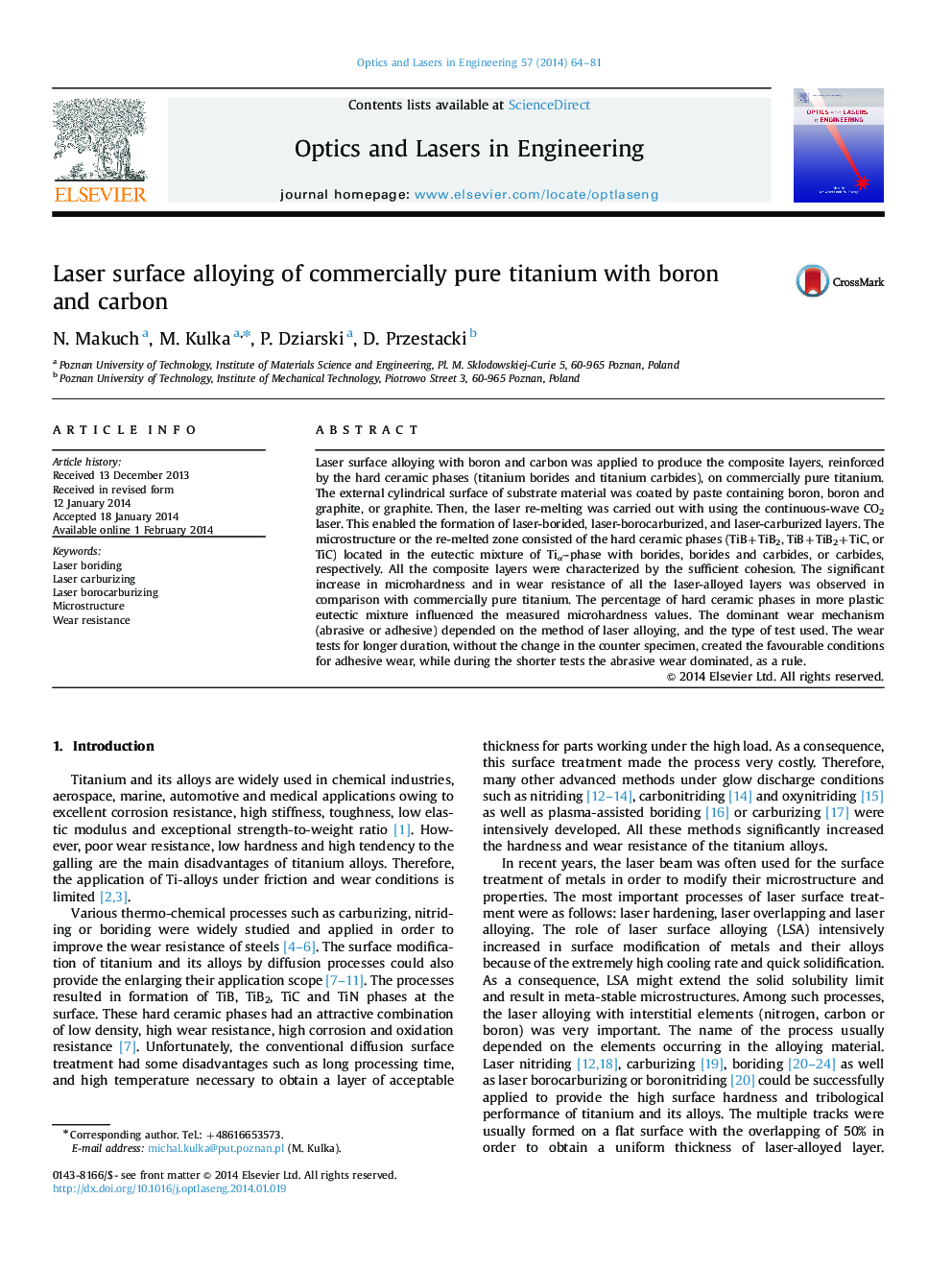| کد مقاله | کد نشریه | سال انتشار | مقاله انگلیسی | نسخه تمام متن |
|---|---|---|---|---|
| 735203 | 1461736 | 2014 | 18 صفحه PDF | دانلود رایگان |
• Laser surface alloying with boron and carbon was proposed to formation of composite layers on pure titanium.
• The microstructure of laser-alloyed layer consisted of hard ceramic phases and eutectic mixture.
• The increased hardness and wear resistance of composite layers were obtained.
• The wear tests of the layers showed the catastrophic wear of the counter-samples.
• The dominant wear mechanism (abrasive or adhesive) depended on the method of laser alloying and on test duration.
Laser surface alloying with boron and carbon was applied to produce the composite layers, reinforced by the hard ceramic phases (titanium borides and titanium carbides), on commercially pure titanium. The external cylindrical surface of substrate material was coated by paste containing boron, boron and graphite, or graphite. Then, the laser re-melting was carried out with using the continuous-wave CO2 laser. This enabled the formation of laser-borided, laser-borocarburized, and laser-carburized layers. The microstructure or the re-melted zone consisted of the hard ceramic phases (TiB+TiB2, TiB+TiB2+TiC, or TiC) located in the eutectic mixture of Tiα'-phase with borides, borides and carbides, or carbides, respectively. All the composite layers were characterized by the sufficient cohesion. The significant increase in microhardness and in wear resistance of all the laser-alloyed layers was observed in comparison with commercially pure titanium. The percentage of hard ceramic phases in more plastic eutectic mixture influenced the measured microhardness values. The dominant wear mechanism (abrasive or adhesive) depended on the method of laser alloying, and the type of test used. The wear tests for longer duration, without the change in the counter specimen, created the favourable conditions for adhesive wear, while during the shorter tests the abrasive wear dominated, as a rule.
Journal: Optics and Lasers in Engineering - Volume 57, June 2014, Pages 64–81
